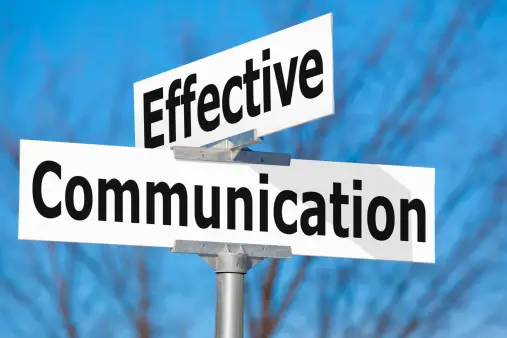Effective communication is fundamental to success in both personal and professional relationships. It encompasses a range of skills, including verbal and non-verbal communication, active listening, empathy, clarity, and persuasion. In today’s fast-paced world, mastering these skills can significantly enhance your ability to connect with others, convey your ideas, and achieve your goals. This article explores the essential skills for effective communication and provides practical tips to help you improve.
The Importance of Effective Communication
Enhances Relationships
Effective communication is the cornerstone of strong relationships. Whether in personal or professional settings, being able to communicate clearly and empathetically fosters trust, understanding, and cooperation. When people feel heard and understood, it strengthens the bond between them.
Boosts Professional Success
In the workplace, effective communication is crucial for collaboration, problem-solving, and leadership. It helps in conveying ideas clearly, managing conflicts, and motivating team members. Good communicators are often more successful in their careers as they can articulate their thoughts and persuade others effectively.
Reduces Misunderstandings
Miscommunications can lead to errors, conflicts, and frustration. By honing your communication skills, you can minimize misunderstandings and ensure that your message is received as intended. This is particularly important in complex or sensitive situations.
Essential Communication Skills
1. Active Listening
Active listening is the foundation of effective communication. It involves fully concentrating, understanding, responding, and remembering what is being said. Unlike passive listening, where one might hear words without fully engaging, active listening requires a conscious effort to understand the speaker’s message.
Tips for Active Listening:
- Maintain Eye Contact: Show that you are engaged by maintaining appropriate eye contact with the speaker.
- Nod and Smile: Use non-verbal cues like nodding and smiling to indicate that you are listening.
- Avoid Interrupting: Let the speaker finish their thoughts before responding. Interrupting can be perceived as disrespectful.
- Paraphrase and Summarize: Repeat back what you have heard in your own words to ensure understanding.
- Ask Questions: Clarify any points you do not understand by asking questions.
2. Non-Verbal Communication
Non-verbal communication includes body language, facial expressions, gestures, posture, and eye contact. These non-verbal cues can often convey more than words alone and are essential for expressing emotions and attitudes.
Tips for Effective Non-Verbal Communication:
- Be Aware of Your Body Language: Ensure that your body language matches your verbal message. Open and relaxed body language can make you appear more approachable.
- Use Facial Expressions: Your facial expressions should reflect your emotions and the message you are conveying.
- Maintain Good Posture: Stand or sit up straight to show confidence and attentiveness.
- Use Gestures Appropriately: Gestures can emphasize points, but avoid excessive or distracting movements.
- Respect Personal Space: Be mindful of personal space to avoid making others uncomfortable.
3. Empathy
Empathy is the ability to understand and share the feelings of another person. It involves recognizing others’ emotions and responding with care and understanding. Empathetic communication fosters trust and builds stronger relationships.
Tips for Developing Empathy:
- Put Yourself in Their Shoes: Try to understand the situation from the other person’s perspective.
- Acknowledge Emotions: Validate the other person’s feelings by acknowledging their emotions.
- Show Genuine Concern: Express care and concern for the other person’s well-being.
- Listen Without Judgment: Avoid passing judgment or offering unsolicited advice.
- Respond Appropriately: Use supportive language and actions to demonstrate empathy.
4. Clarity and Conciseness
Clear and concise communication ensures that your message is understood without ambiguity. It involves being straightforward, avoiding jargon, and getting to the point without unnecessary details.
Tips for Clear and Concise Communication:
- Know Your Audience: Tailor your message to the understanding and needs of your audience.
- Use Simple Language: Avoid complex words and jargon that might confuse the listener.
- Be Direct: Get to the point quickly and avoid beating around the bush.
- Organize Your Thoughts: Structure your message logically with a clear beginning, middle, and end.
- Use Visual Aids: When appropriate, use visual aids like charts or slides to enhance understanding.
5. Persuasion
Persuasion is the ability to convince others to understand your point of view or take a specific action. It involves presenting arguments logically, appealing to emotions, and building credibility.
Tips for Persuasive Communication:
- Build Credibility: Establish yourself as a knowledgeable and trustworthy source.
- Understand Your Audience: Know the values, needs, and concerns of your audience to tailor your message.
- Use Logical Arguments: Present clear and logical reasons to support your position.
- Appeal to Emotions: Use stories, examples, and emotional appeals to connect with your audience.
- Address Counterarguments: Anticipate and address potential objections to your message.
6. Feedback
Giving and receiving feedback is an essential part of effective communication. Constructive feedback helps improve performance, fosters growth, and strengthens relationships.
Tips for Giving Effective Feedback:
- Be Specific: Provide clear and specific examples of the behavior or issue.
- Be Timely: Give feedback as soon as possible after the event to ensure relevance.
- Focus on Behavior, Not the Person: Address the behavior or action, not the individual’s character.
- Offer Solutions: Suggest ways to improve or correct the behavior.
- Be Positive: Balance negative feedback with positive comments to encourage and motivate.
Tips for Receiving Feedback:
- Listen Actively: Listen to the feedback without interrupting or defending yourself.
- Be Open-Minded: Approach feedback with an open mind and a willingness to learn.
- Ask for Clarification: If the feedback is unclear, ask for specific examples or suggestions.
- Reflect and Act: Reflect on the feedback and take steps to make necessary improvements.
- Express Gratitude: Thank the person for their feedback, regardless of whether it is positive or negative.
7. Assertiveness
Assertiveness is the ability to express your thoughts, feelings, and needs directly and respectfully. It involves standing up for yourself while respecting others’ rights and opinions.
Tips for Assertive Communication:
- Use “I” Statements: Express your feelings and needs using “I” statements (e.g., “I feel…,” “I need…”).
- Be Direct and Honest: Communicate your thoughts and feelings openly and honestly.
- Maintain Eye Contact: Show confidence and sincerity by maintaining appropriate eye contact.
- Stay Calm and Composed: Keep your emotions in check and avoid aggressive or passive behavior.
- Respect Others: Acknowledge and respect the rights and opinions of others while expressing your own.
Improving Communication Skills
Practice Active Listening
Active listening is a skill that can be developed with practice. Engage in conversations with the intent to understand rather than just respond. Focus on the speaker, ask questions, and provide feedback to ensure you comprehend the message.
Observe Non-Verbal Cues
Pay attention to the non-verbal signals you send and receive. Practice maintaining open body language, using appropriate facial expressions, and being mindful of your gestures and posture. Observing others’ non-verbal cues can also provide valuable insights into their feelings and intentions.
Develop Empathy
Cultivate empathy by actively trying to understand others’ perspectives and emotions. Engage in conversations with a genuine interest in the other person’s experience and feelings. Practice empathy in your daily interactions to build stronger connections.
Enhance Clarity and Conciseness
Work on improving the clarity and conciseness of your communication by organizing your thoughts before speaking or writing. Practice summarizing complex ideas in simple terms and avoid unnecessary details. Seek feedback from others to identify areas for improvement.
Strengthen Persuasion Skills
Develop your persuasion skills by studying effective persuasive techniques and practicing them in various situations. Focus on building credibility, understanding your audience, and presenting logical and emotional arguments. Practice addressing counterarguments to strengthen your persuasive abilities.
Seek and Provide Feedback
Actively seek feedback from others to improve your communication skills. Be open to constructive criticism and use it as an opportunity for growth. Similarly, provide feedback to others in a constructive and supportive manner to help them improve.
Practice Assertiveness
Work on becoming more assertive by practicing expressing your thoughts and feelings directly and respectfully. Use “I” statements to communicate your needs and avoid passive or aggressive behavior. Practice assertiveness in different situations to build confidence.
Overcoming Communication Barriers
Recognize and Address Barriers
Communication barriers can hinder effective communication and lead to misunderstandings. Common barriers include language differences, cultural differences, physical distractions, and emotional barriers. Recognize these barriers and take steps to address them.
Tips for Overcoming Communication Barriers:
- Simplify Language: Use simple and clear language to avoid confusion, especially when communicating with non-native speakers.
- Be Culturally Sensitive: Be aware of cultural differences and adapt your communication style accordingly.
- Minimize Distractions: Create a conducive environment for communication by minimizing physical distractions.
- Manage Emotions: Be mindful of your emotions and those of others, and address any emotional barriers that may affect communication.
Adapt Your Communication Style
Different people have different communication styles and preferences. Adapting your communication style to match the needs of your audience can enhance understanding and rapport.
Tips for Adapting Communication Style:
- Identify Preferences: Pay attention to the communication preferences of others, such as their preferred mode of communication (e.g., email, phone, face-to-face).
- Be Flexible: Be willing to adjust your communication style to accommodate different personalities and situations.
- Use Appropriate Tone: Match your tone of voice and language to the context and audience.
The Role of Technology in Communication
Leveraging Technology for Communication
Technology has transformed the way we communicate, providing new tools and platforms for connecting with others. Leveraging technology effectively can enhance communication and productivity.
Popular Communication Tools:
- Email: A widely used tool for professional communication, allowing for detailed and asynchronous communication.
- Instant Messaging: Tools like Slack, Microsoft Teams, and WhatsApp enable real-time communication and collaboration.
- Video Conferencing: Platforms like Zoom, Skype, and Google Meet facilitate face-to-face communication, even remotely.
- Social Media: Platforms like LinkedIn, Twitter, and Facebook offer opportunities for networking and sharing information.
- Project Management Tools: Tools like Trello, Asana, and Monday.com help teams collaborate, track tasks, and communicate effectively.
Best Practices for Digital Communication
Effective digital communication requires adapting your skills to the online environment. Here are some best practices for digital communication:
- Be Clear and Concise: Write clear and concise messages to ensure your point is understood.
- Use Professional Language: Maintain a professional tone in emails and messages, especially in a work context.
- Be Responsive: Respond to messages promptly to maintain effective communication.
- Use Visual Aids: Incorporate visuals, such as images, charts, and videos, to enhance understanding.
- Respect Digital Etiquette: Follow digital etiquette, such as not overloading others with messages and being mindful of response times.
Conclusion
Effective communication is an essential skill that impacts every aspect of our lives. By mastering key communication skills such as active listening, non-verbal communication, empathy, clarity, persuasion, feedback, and assertiveness, you can enhance your relationships, boost your professional success, and reduce misunderstandings. Additionally, overcoming communication barriers, adapting your communication style, and leveraging technology can further improve your ability to connect with others and convey your message effectively. Embrace these essential communication skills to achieve your personal and professional goals and build stronger, more meaningful connections with those around you.




